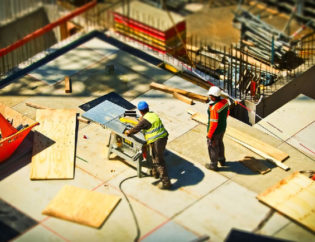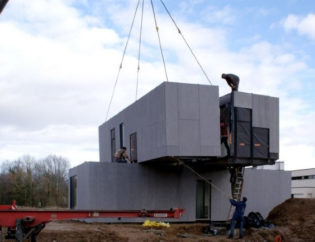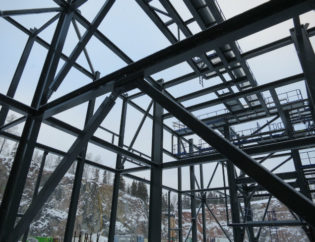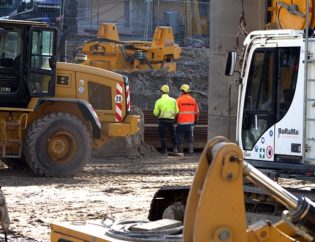
We all know about the benefits of modular construction. We also know that these smartly-built structures outlive any traditional ones and are much more energy efficient too. But no building survives forever. In several situations, even these structures need to be replaced. And no, crossing the lifespan of the building isn’t the only reason to replace it. Here are some of those cases when you’ll have to replace the modular building.
Move to Another Location
For people who know the benefits of modular buildings, you already know that modular construction can be dismantled, relocated, and reinstalled at a new location again. But the entire process of dismantling and reassembling modules together at a new place is nothing but demolition and starting a new modular construction. So, this implies that when you wish to relocate to a new place, you have to replace your modular building. You can talk to your modular construction specialist and find out if they will use the same modules for the new construction or recycle them for something else. If you plan to have the very same structure at the new location as well, the modules can be reused as it is. If not, the new modules will be fabricated. But in either case, you will have to opt for replacement of your modular building.
Total Architectural Remodelling
One of the most common scenarios when people replace their modular construction is when they want a complete facelift of the building. This facelift can be either of the exteriors or on the inside. When you think that your modular building looks outdated or when it no more aligns with your usability and likings, you can replace the structure. Think of this replacement as a complete makeover of your house. You tend to demolish most of the structure and rebuild something innovative and likeable. The new modular construction will be done to meet your new set of expectations.
Roof Failure
Modular buildings typically use commercial Ethylene Propylene Diene Monomer (EPDM) rubber roofs, which are manufactured to last upwards of 30 years. But after some time, the rubber materials can begin to shrink and pull away from walls and flooring. Additionally, because these roofs are glued into place, seams and caulking may pull apart. All of these issues allow moisture to enter underneath the roof, which will eventually cause problems inside your modular building. However, you can catch many of these issues early on by undergoing periodic building inspection and maintenance and major problems can be avoided. Take a close look at the roofing of your modular building. Or ask your modular building expert to pay a visit and thoroughly inspect the building to identify any problems. Once identified, these problems can be dealt with by easy repair work. But if you miss out on these issues, you will require a complete modular construction replacement.
Soft Ground Surface
After almost 20-30 years, you may start to notice soft spots in your building’s flooring. This happens when your subfloor is not securely attached to the joists underneath. Over time, these joist settle or bend and the flooring becomes loose or detached in areas. If you start to experience more soft spots on your floors, it may be time to replace your modular building. If you don’t replace your building, walking on the floors can become a difficult task. Not only this, but the soft ground surface may also result in foundational movements that can ruin the building’s integrity. Hence, replacement is crucial and should be done at the earliest.
Water Leakages
As mentioned above, over the years, the modules can develop spaces between them. The roof will detach itself from the walls. The space hence created is enough for water to infilter and result in leaks in your modular building. As your modular building ages, these leaks can come from doors, windows, and datelines (where the individual modules are assembled together). A persistent issue with water infiltration can signify that your temporary building may have reached the end of its life expectancy. This issue, like others, can be curtailed through regular maintenance, such as re-caulking areas where you suspect water is entering. Anything that is worse will require complete modular building replacement.
Module Corrosion
Most modular constructions are done using high-quality wood, steel, and glass. When modules are fabricated in a factory setting, special care is taken of the raw materials, and the modules made. There is no chance of the materials or the resulted modules to get affected due to external factors like climate and chemicals. This is the reason why modular buildings tend to survive more than traditionally-built ones. However, when the building is erected, it is exposed to external factors regularly. Pollution, climatic changes, extreme weather conditions, natural calamities, and other factors take a toll on the building slowly. And eventually, the modules of modular construction start to lose their integrity and corrode. This corrosion can either be on the outside or inside of the building. In both cases, you must get rid of the module to prevent any damage to the entire building. You have the choice to replace only the affected modules. But think about it, if one or two modules were affected due to the factors, won’t other modules also have same issues very soon? Therefore, consider replacing the entire building at once.
Modular buildings typically have a life expectancy of 20-25 years. Like any building, the construction lifespan for your modular building depends on how well you care for it with regular maintenance. When they are well maintained and renovated periodically, your modular building life expectancy can last a few more years. Ask your modular construction expert to help you with the right maintenance tips and carry out all the necessary repairs whenever required.









